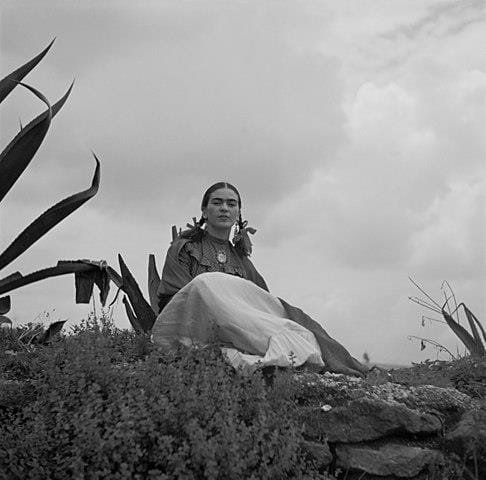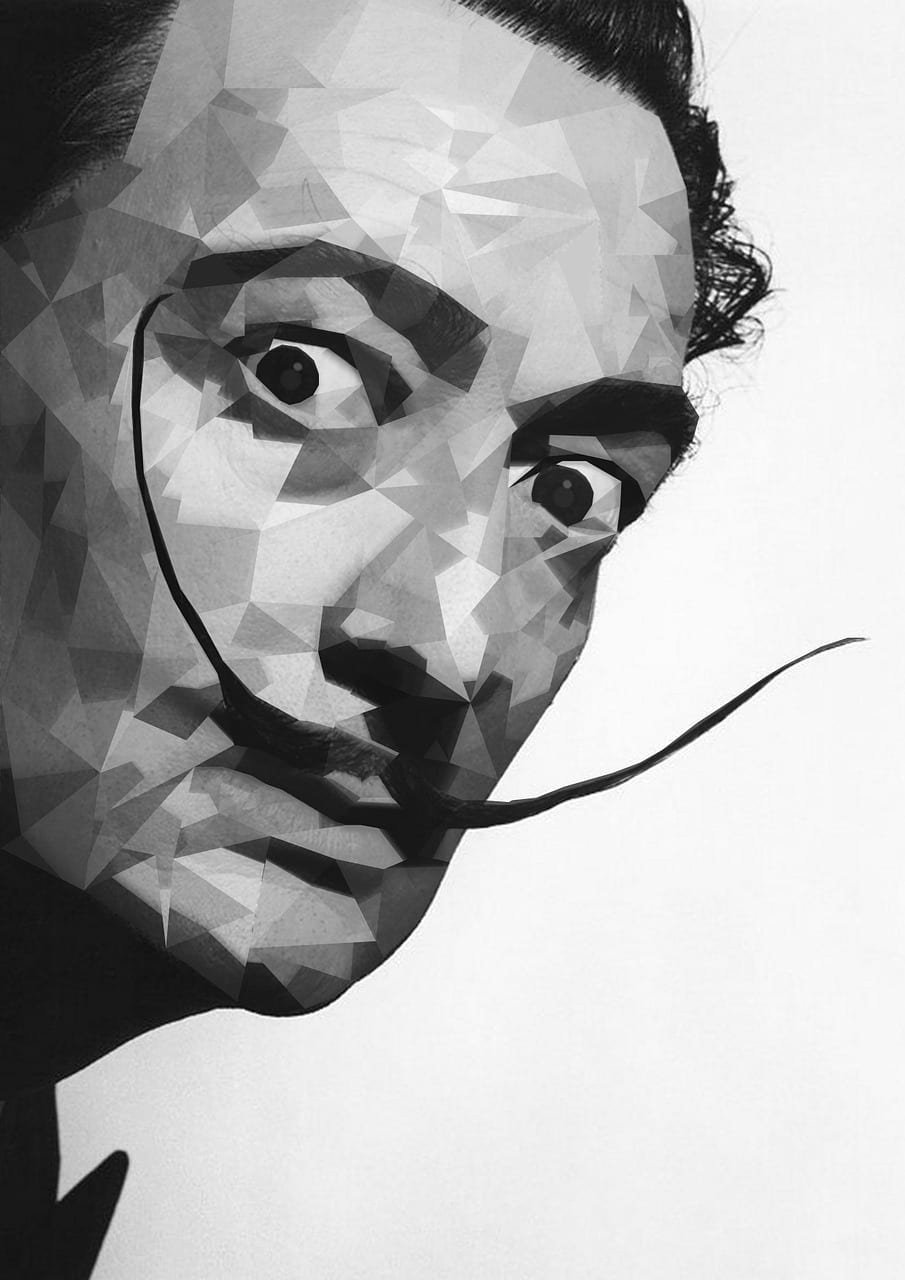
In any field of work, women face a lot of discrimination and have to struggle to make a name. The situation has gotten better today, at least in the developed countries. All across the world before the 21st century, a woman needed much more than the talent to survive as an artist. One such artist was the Mexican painter Frida Kahlo who became a prominent name in the world of art. Today, she is known not only because of her art but is also considered a feminist icon. Her paintings are known for their celebration of the Mexican and indigenous culture as well as for their feminist themes.
Not only did Frida struggle as a woman, but her life was filled with many sufferings. Disabled by polio as a child, she still dreamt of becoming a doctor. But due to a horrible accident and receiving many injuries, she couldn’t continue her studies to become a doctor. Although she had always been interested in art, it was this period in her life when she took serious interest in painting. Once she saw the ray of hope through the paintbrush, it was no holding back for Frida, and she went on to create masterpieces.
Here is a list of Frida Kahlo’s works which she is most known for:
Self Portrait in a Velvet Dress

Painted in 1926, this is one of her earliest known paintings which well defines her style and laid a foundation. Frida Kahlo painted many self-portraits in her career and this was the one where it all started. She painted this while she was on bed rest after her accident. It was made by her for her boyfriend Alejandro Gomez Arias after they had broken up. But they got back together after this painting. Her heavy gaze and dark eyebrows were two of the many aspects which can also be seen in her later self-portraits. The portrait expresses her sorrow and the misery that she faced at the time it was made.
But soon after getting back with her, Arias left Mexico and Frida forever. Their love story, combined with this beautifully made self-portrait speaks volumes and puts life into the painting. Not only is this portrait known because of how she captured her expressions but also for the background. A dark sky and stormy waves compliment her portrait and enhance the emotions attached to it. Frida defined the background as the symbol of her life, and she continued with such backgrounds in her later portraits.
The Bus

This painting made in 1929 showed a pivotal episode of her life and the influence of her husband. It depicts the scene from the day when the accident she was involved in took place. Frida may have drawn herself in this painting as the girl sitting on the far right. However, she portrayed herself quite differently from how she used to dress at the time when the accident took place. Her attire in this painting seems similar to the way she dressed after her marriage to Diego Rivera. Before making this painting, she also became interested in politics and famously joined the Mexican Communist Party in 1927.
Her political ideology is also quite evidently portrayed in this painting through her depiction of different characters. All the characters portrayed in this painting look like they come from the different social classes of the Mexican society. On the far left is a woman sitting with a shopping basket. Next is a man holding a hammer, suggesting that he is a worker going or coming back from work. Then a bare foot woman is depicted breastfeeding her baby with her possessions packed in a sheet lying near her feet. A kid is looking outside the window while the man next to him sits with a bag of money in his hand. There was gold dust on Frida’s body after the accident, which suggests it’s her in the painting.
The Two Fridas

This is arguably Frida’s best-known work and the first large scale work done by her. Painted in the year 1939 soon after her divorce from Diego Rivera, this depicts two Fridas sharing a bench. Both dressed very differently: one wearing a white-modern dress while the other one is wearing a traditional Mexican dress. They are holding hands and are also connected through an artery which goes into each of their hearts. The hearts of both the Fridas are visible: modern Frida’s heart is empty while the traditional Frida’s is full. It can be interpreted that one Frida is healthy and in love while the other is completely heartbroken.
It is also said that the Frida in white depicts her European side since her mother was Spanish. Meanwhile, the other Frida is Mexican as she wears colorful clothes that she wore to impress her husband. The painting also shows the Mexican Frida holding a portrait of Diego while the European Frida’s dress has blood spots. Which can be interpreted as a depiction of the divorcee Frida and the happily married Frida. The duality doesn’t stop with the two Fridas but can also be seen in the background. While the sky looks stormy and full of clouds, the earth looks hot and burning.
Self-Portrait with Thorn Necklace and Hummingbird

Another one of the 55 self-portraits by Frida Kahlo and this was made in the year 1940. This shows Frida looking directly at her viewers, a recurring aspect of her self-portraits. She is wearing a white dress and a necklace made of thorns. There is a monkey on her right shoulder and on the left is a black cat. On her chest is a hummingbird while some dragonflies fly around her. Lookin at all this, one can interpret that the background consists of a forest as there are tropical green leaves too.
Frida might have painted herself as Jesus Christ in this one with the obvious reference to the crown of thorns. Also, the butterflies in the background may be a symbol of resurrection. The humming looks lifeless, which could be a reference to her Mexican roots. Since hummingbirds are seen as a symbol of love in the Mexican culture. And a lifeless hummingbird may suggest her suffering in her marriage, especially with Diego having an affair with her young sister. The monkey is a reference to the fact that Diago gifted her a monkey, while the black cat is a prominent symbol of bad luck.
The Broken Column

While Kahlo was no stranger to pain and suffering, this painting may be the best representation of these themes from her. It was painted in 1944 after she underwent spinal surgery, and so rightfully, the theme of pain is there. As mentioned earlier, Kahlo went through a lot of pain since her childhood and never had a healthy body. This painting is an embodiment of all the pain which she went through in her life. The painting depicts Kahlo’s near-naked body and her torso torn open from the middle. Through the torn flesh, you can see a broken column that is replacing her spine.
There are nails all over her body, which suggests the pain that she feels at every part of her body. Frida has tears in her eyes and yet her facial expressions remain straight and tough. It shows how she is keeping up with all the pain and overcoming her broken body. Not only physical pain, but this may also be a representation of the emotional turmoil which she went through in her life. This painting is one of the reasons why many of her contemporaries labeled her as a surrealist despite her distancing her work from it.
What Makes Frida a Feminist Icon?
Being a woman and successful at her work is not the only reason Frida Kahlo is seen as a feminist icon. A lot of her work deals with themes relating to women’s issues as well as women’s bodies. Through her brave autobiographical depiction in all her 55 portraits, she has shown the acceptance of oneself. She didn’t just take pride in her own skin but also looked around her and represented herself. In many of her paintings, Frida has referred to her roots, be it Mexican or Spanish. She has also critiqued as well as presented class differences and social structures in her art. Being a member of the Mexican Communist Party, her fight for equality is not just a work of art. Frida believed in revolution, and her art was her weapon. Today, many people take inspiration from her work as well as her life’s struggle to fight their battles. Not only the people from Mexico, but she inspires lives all over the globe.

